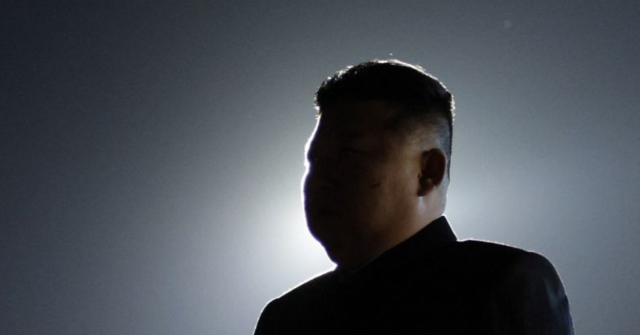The Congressional Research Service (CRS) issued a report on Friday that found North Korea has produced enough fissile material — i.e. atomic bomb fuel — to build up to 90 nuclear warheads, a dramatic increase from the 20 to 60 warheads it was believed capable of building last year.
“North Korea continues to advance its nuclear weapons and missile programs despite UN Security Council sanctions and high-level diplomatic efforts. The country’s ballistic missile testing, military parades, and policy statements suggest that North Korea is continuing to build a nuclear warfighting capability designed to evade regional ballistic missile defenses,” CRS warned.
CRS worried that the longstanding strategy of deterrence, exercised through sanctions and U.S. military drills with South Korea, has not dissuaded Pyongyang from pumping out a remarkable amount of weapons-grade plutonium and enriched uranium.
In fact, North Korea appears to have not only expanded its primary uranium enrichment facility at Yongbyon, but opened a second centrifuge farm at Kangson. International Atomic Energy Agency (IAEA) chief Rafael Grossi warned about this second facility in an April address to the Council on Foreign Relations (CFR) in Washington in April.
“It has spawned exponentially. The program is no longer, you know, the complex at Yongbyon. It’s Kangson. It’s other places also in the country,” Grossi said of North Korea’s nuclear weapons program.
“It’s a light water reactor. It’s a second and perhaps a third enrichment facility being built at the moment. It’s a reprocessing campaign, which is ongoing as we speak. And there’s, you know, a nuclear arsenal that exists,” he said.
Grossi described North Korea’s nuclear program as “completely off the charts,” and said he favored diplomatic outreach over the older containment-sanctions model, such as President Donald Trump’s outreach to North Korean dictator Kim Jong-un during his first term. Grossi felt Trump was on the right track, even though his efforts, halted by the results of the 2020 election, were ultimately unsuccessful.
The precise amount of fissile material stockpiled by the highly secretive North Korean regime is difficult to calculate, as is how long it would take North Korean technicians to build reliable nuclear warheads from that material.
CRS cited various estimates that Pyongyang has assembled about 50 warheads to date and has enough material to make 40 more. Congressional researchers cited a recent Department of Defense (DoD) analysis that found North Korea “is now postured to conduct a seventh nuclear test at a time of its choosing.”
Another point of concern is whether North Korea can miniaturize its nuclear bombs enough to fit them on long-range missiles or not. Dictator Kim Jong-un boasted in 2021 that his scientists were able to “miniaturize, lighten and standardize nuclear weapons and to make them tactical ones.”
This implies something short of nuclear-tipped intercontinental ballistic missiles (ICBMs), but CRS advised policymakers not to underestimate how close Pyongyang is getting to that level of miniaturization — or how much energy North Korea is putting into ballistic missile development.
“North Korea has been improving its ability to strike the continental United States with an ICBM through a series of tests, first in 2017, then in 2022, four times in 2023, and most recently in October 2024,” the report noted.
“North Korea has committed to expanding the performance of its precision guided tactical weapons, which can pose significant threats to South Korea and U.S. assets on the peninsula,” it added.
Pyongyang is expected to get some help from Russia with its missile program. CRS noted the widely-held expectation among military analysts that Russia will reward North Korea for dumping cannon fodder into the Ukraine war by providing missile technology. The commander of American forces in South Korea told Congress in April that North Korea will likely make significant “advancements” in weapons of mass destruction “across the next three to five years” with Russia’s help.
A final disturbing point made by CRS was that North Korea is not only developing nuclear weapons technology at the tactical level, but teaching its troops how to use the weapons effectively. Pyongyang seems intent on showing Washington and Seoul there is no plausible scenario for nullifying North Korean nuclear capability with a first strike.
“North Korean missile tests have demonstrated growing success and, coupled with increased operational training exercises, suggest a pattern designed to strengthen the credibility of North Korea’s regional nuclear deterrent strategy,” CRS concluded.
Read the full article here
